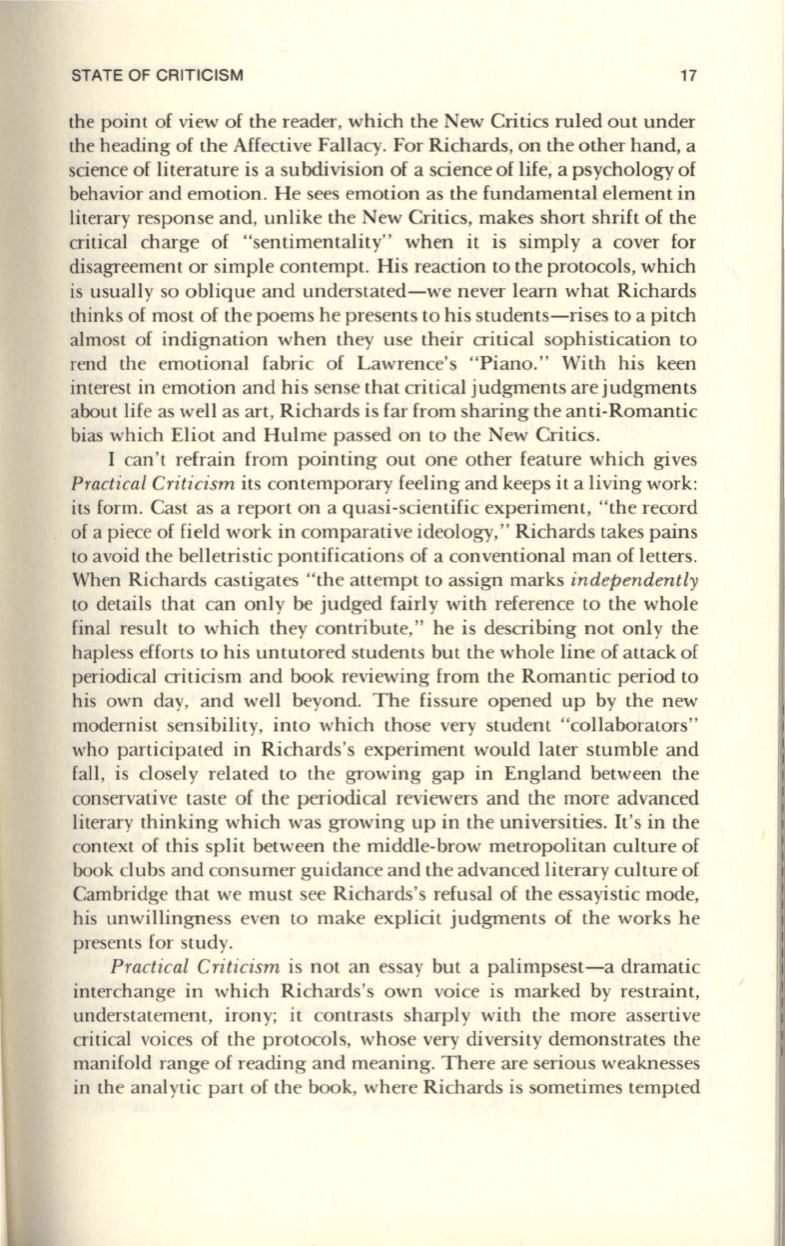
STATE OF CRITICISM
17
the point of view of the reader, which the New Critics ruled out under
the heading of the Affective Fallacy. For Richards, on the other hand, a
science of literature is a subdivision of a science of life, a psychology of
behavior and emotion. He sees emotion as the fundamental element in
literary response and, unlike the New Critics, makes short shrift of the
critical charge of "sentimentality" when it is simply a cover for
disagreement or simple contempt. His reaction
to
the protocols, which
is usually so oblique and understated-we never learn what Richards
thinks of most of the poems he presents to his students-rises to a pitch
almost of indignation when they use their critical sophistication to
rend the emotional fabric of Lawrence's "Piano." With his keen
interest in emotion and his sense that critical judgments are judgments
about life as well as an, Richards is far from sharing the anti-Romantic
bias which Eliot and Hulme passed on to the New Critics.
I can't refrain from pointing out one other feature which gives
Practical Criticism
its contemporary feeling and keeps it a living work:
its form. Cast as a report on a quasi-scientific experiment, "the record
of a piece of field work in comparative ideology," Richards takes pains
to avoid the belletristic pontifications of a conventional man of letters.
When Richards castigates "the attempt to assign marks
independently
to
details that can only be judged fairly with reference to the whole
final result to which they contribute," he is describing not only the
hapless efforts to his untutored students but the whole line of attack of
periodical criticism and book reviewing from the Romantic period
to
his own day, and well beyond. The fissure opened up by the new
moderni t sensibility, into which those very student "collaborators"
who participated in Richards's experiment would later stumble and
fall, is closely related to the growing gap in England between the
conservati ve taste of the periodical reviewers and the more advanced
literary thinking which was growing up in the universities. It's in the
context of this split between the middle-brow metropolitan culture of
book clubs and consumer guidance and the advanced literary culture of
Cambridge that we must see Richards's refusal of the essayistic mode,
his unwillingness even to make explicit judgments of the works he
presents for study.
Practical Criticism
is not an essay but a palimpsest-a dramatic
interchange in which Richards's own voice is marked by restraint,
understatement, irony; it contrasts sharply with the more assertive
critical voices of the protocol, whose very diversity demonstrates the
manifold range of reading and meaning. There are serious weaknesses
in the analytic part of the book, where Richards is sometimes tempted


